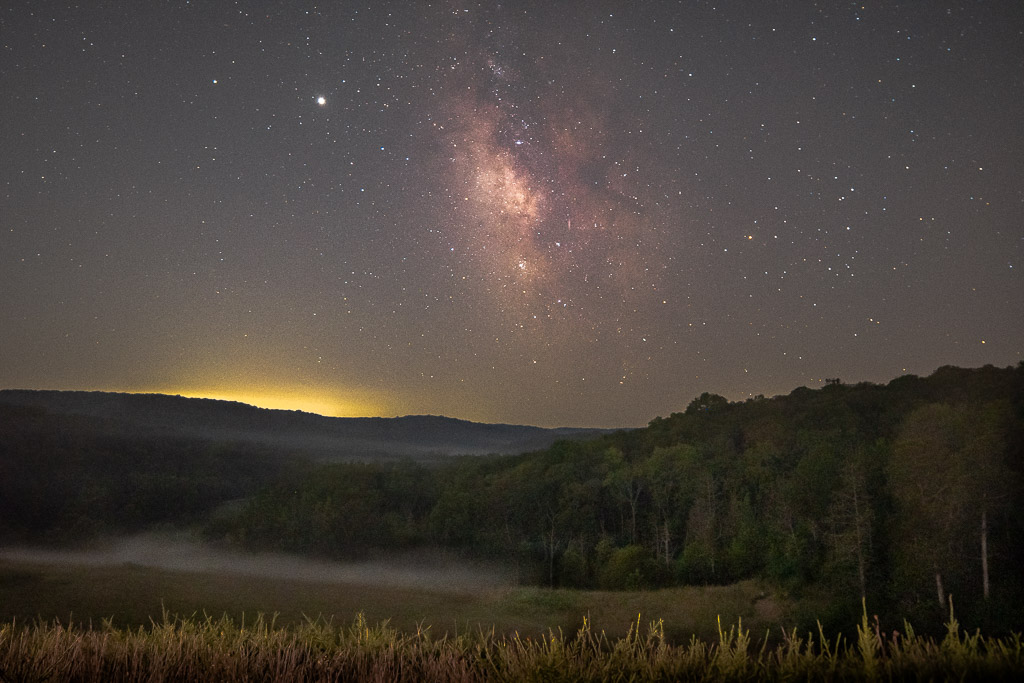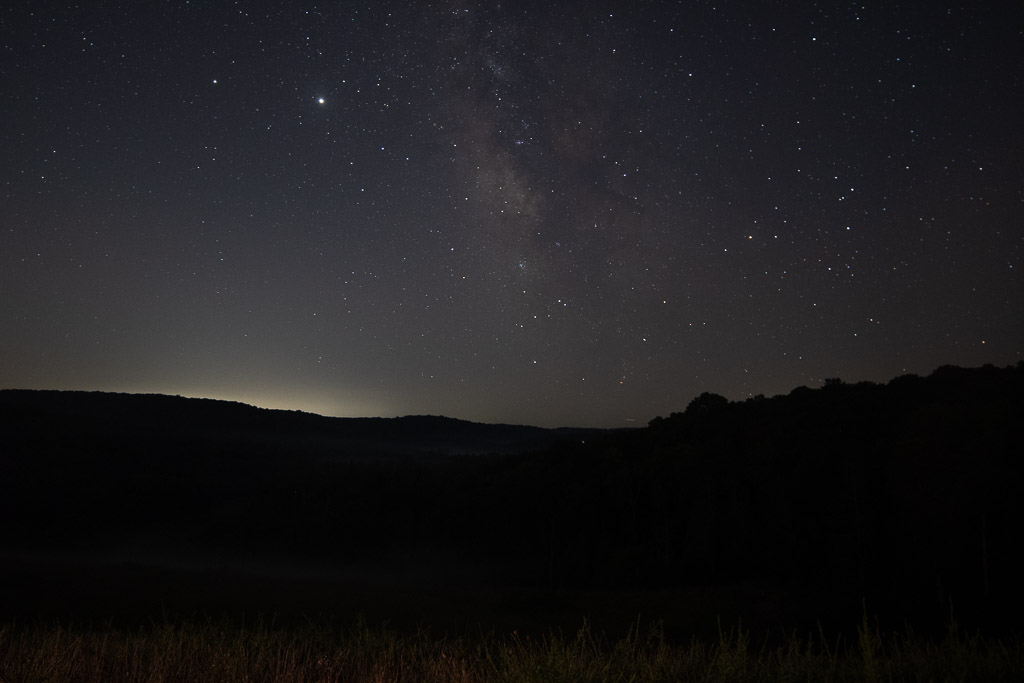Mary Sue Rosenthal
About the Image(s)
This is my first attempt to capturing the Milky Way.
Settings: Nikon D500, Lens 14mm, focal length 14mm, ISO 1600, 1/20 sec, f/2.8
This round’s discussion is now closed!
7 comments posted
This is lovely. It makes me want to walk into the field. My only suggestion is that you may have lightened the foreground a bit too much, especially the grass. I think if you darkened it a bit, the sky will pop. Beautiful astro photography! Posted: 10/06/2020 16:36:29
Your post processing is well done to make the image more interesting by making the foreground visible.
I am curious to know whether the golden light behind the trees on the left was the sunrise? Posted: 10/07/2020 07:33:22
I am curious to know whether the golden light behind the trees on the left was the sunrise? Posted: 10/07/2020 07:33:22
I wish it was the sunrise but it is light pollution. Posted: 10/14/2020 15:13:55
Thanks for your clarification. The light pollution makes the scene more intriguing, like the milky way at sunrise! (Will it ever exist anyway?)
Posted: 10/15/2020 21:13:32
Posted: 10/15/2020 21:13:32
Your landscape scene, Mary Sue, has a nice clear view of the milky way. I see no obstacles in the way, like trees or mountains. You have some good elements in the photo, include the north star on the left vertical rule of thirds. The milky way itself is centered on the upper horizontal rule of thirds. There is a nicely lit foreground of golden grasses and a darker middle ground of rolling hills. The sun is peaking over the horizon as a bonus.
The original file and the edited version you submitted are both jpegs. As I see it, the brightest area of the photograph is the north star, followed by the sun at the horizon, then the foreground grasses,' and finally completing the circle around the image the milky way.
My suggestion is to work with the adjustments in the basic-panel if you use Lightroom. You could raise the expose a bit +1.25, raise contrast 5, lower highlights -35, raise shadows 49, and lower whites and blacks -10 and -9, respectively. Vibrance adjust to 20, and saturation to 3. My other suggestion would be to play with the split tones of the highlights and shadows. This adjustment could help put some color into the sky; currently it looks flat.
If you work in Photoshop, you could take advantage of layers and prevent the milky way from taking on the split-tone adjusts as well; this is a limitation of Lightroom.
In my opinion, if you could shoot the milky way in RAW, then you might have even more options available for editing.
Best regards,
LuAnn Posted: 10/14/2020 14:24:12
The original file and the edited version you submitted are both jpegs. As I see it, the brightest area of the photograph is the north star, followed by the sun at the horizon, then the foreground grasses,' and finally completing the circle around the image the milky way.
My suggestion is to work with the adjustments in the basic-panel if you use Lightroom. You could raise the expose a bit +1.25, raise contrast 5, lower highlights -35, raise shadows 49, and lower whites and blacks -10 and -9, respectively. Vibrance adjust to 20, and saturation to 3. My other suggestion would be to play with the split tones of the highlights and shadows. This adjustment could help put some color into the sky; currently it looks flat.
If you work in Photoshop, you could take advantage of layers and prevent the milky way from taking on the split-tone adjusts as well; this is a limitation of Lightroom.
In my opinion, if you could shoot the milky way in RAW, then you might have even more options available for editing.
Best regards,
LuAnn Posted: 10/14/2020 14:24:12
Thanks for your comments. I shoot in RAW all the time. When I bring my images out of LR I make them in jpegs. Posted: 10/14/2020 15:18:42
Mary Sue, I'm impressed with this lovely image, especially if it's your first attempt of shooting the Milky Way. I really like the floating mist over the landscape and the brightening of the foreground grass doesn't bother me. The details of the Milky Way are well captured. Unfortunately, it's very hard to get away from light pollution even miles from cities. Posted: 10/16/2020 10:05:56

